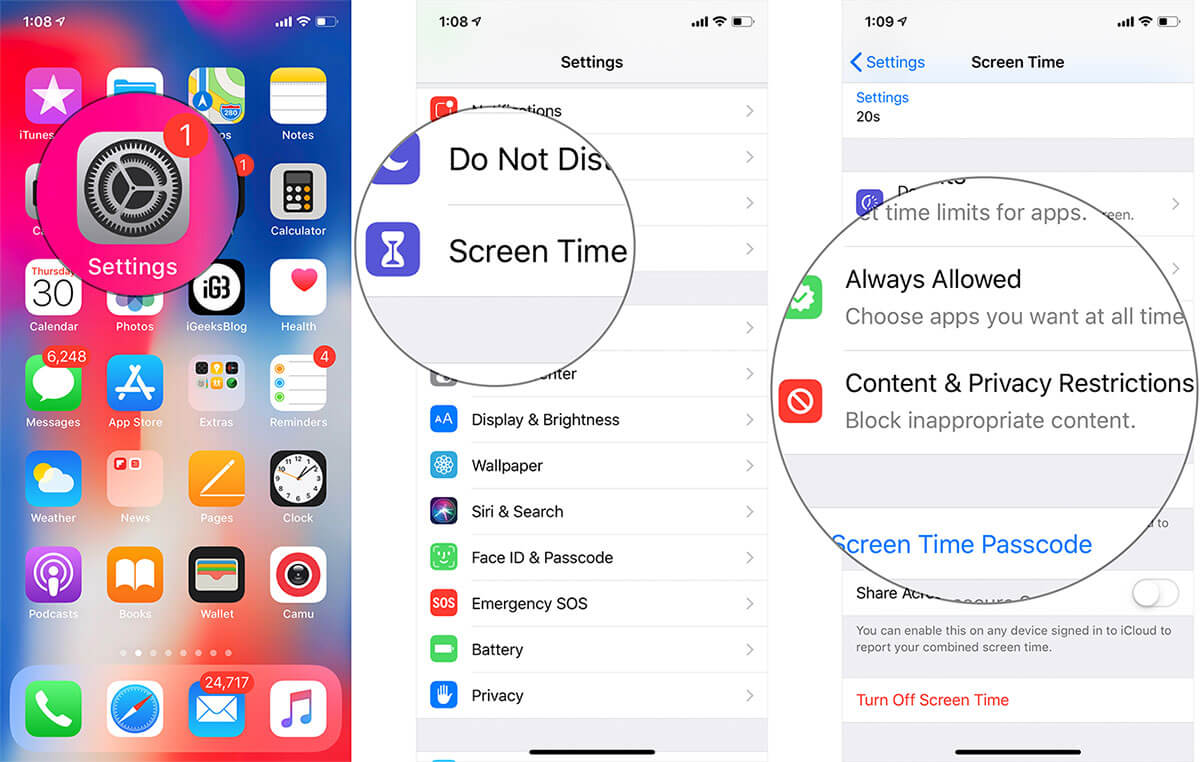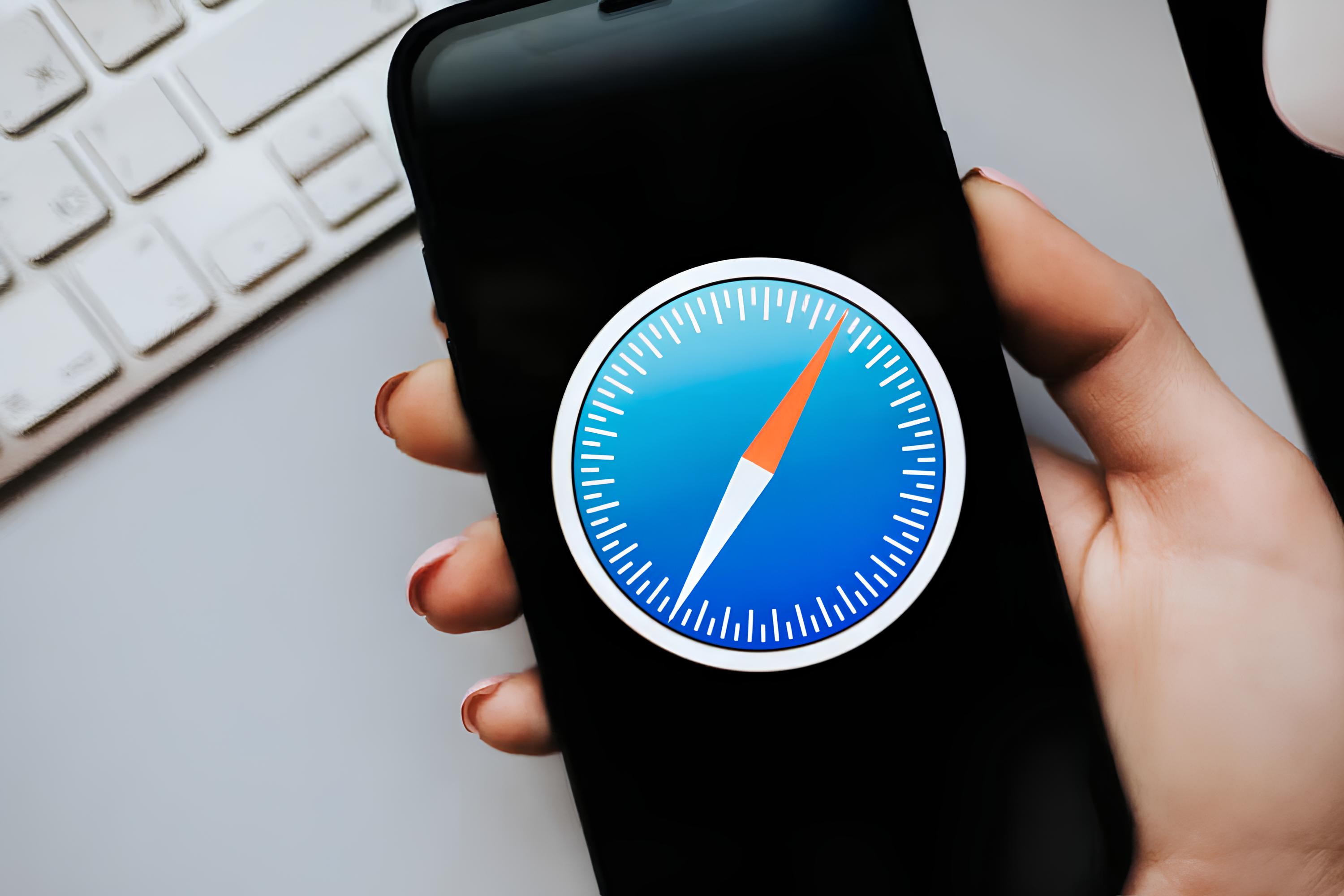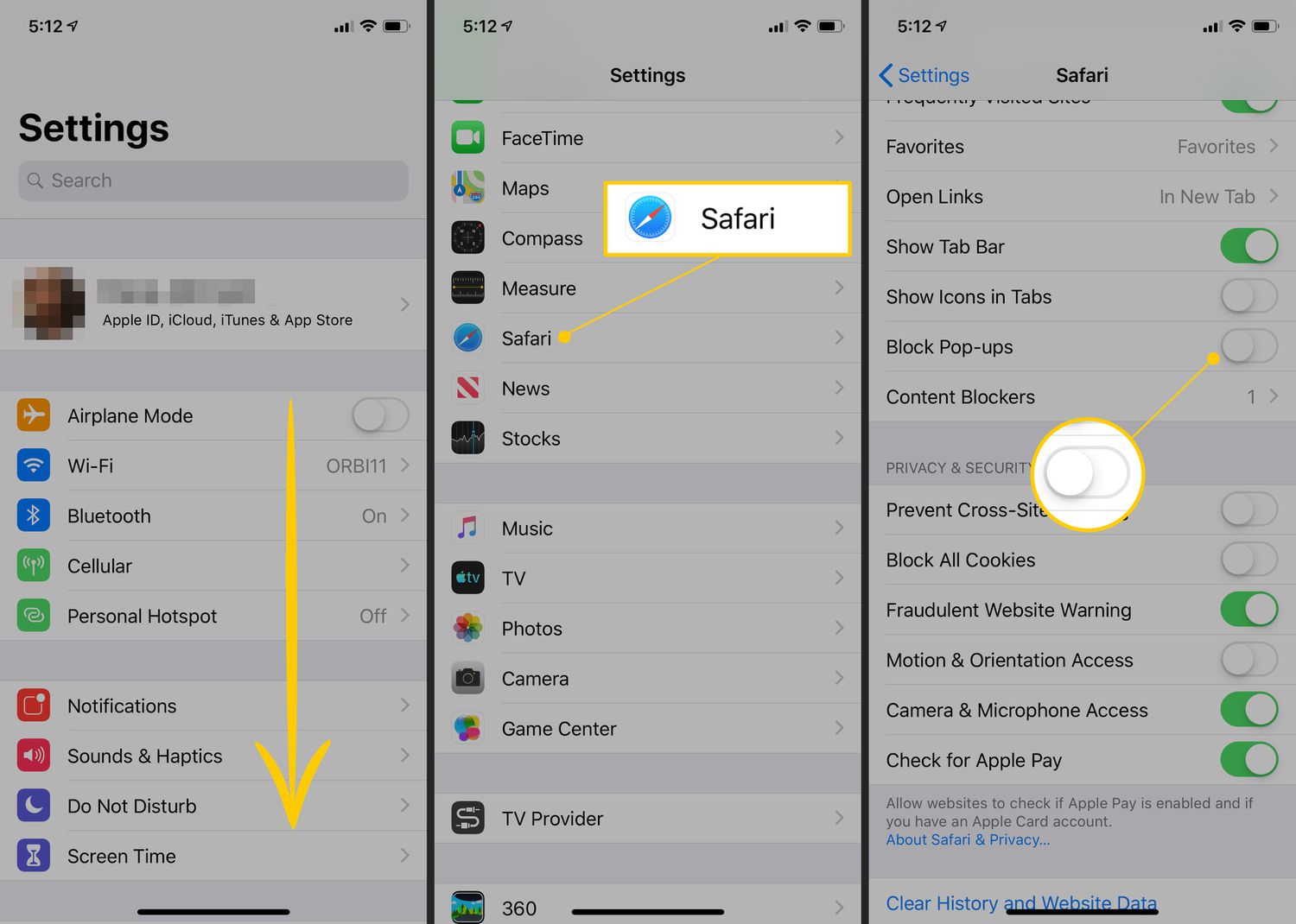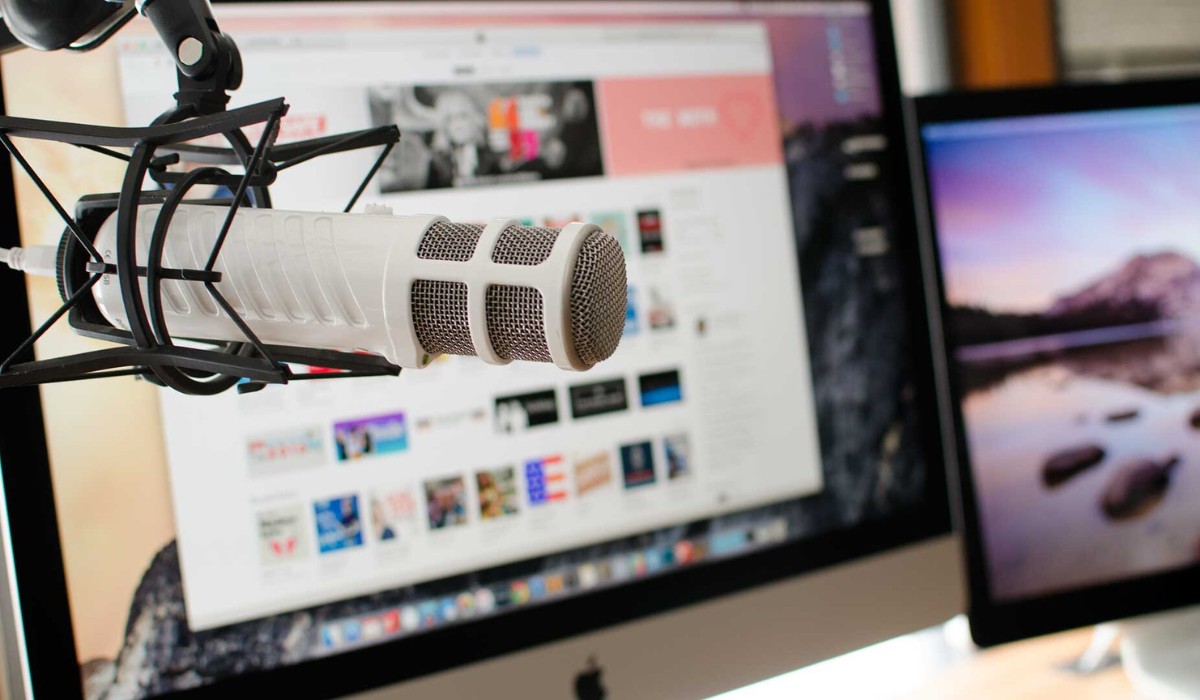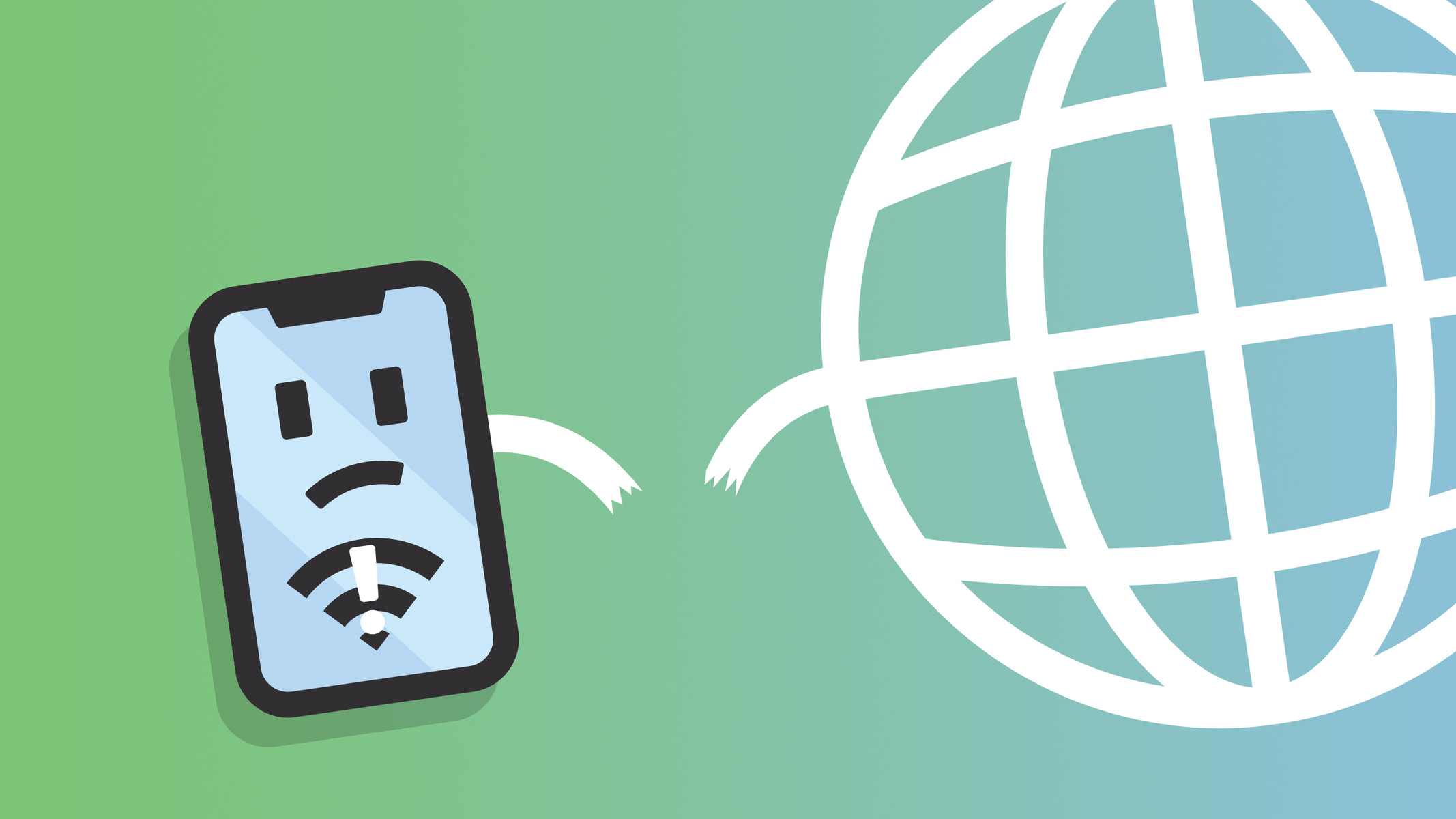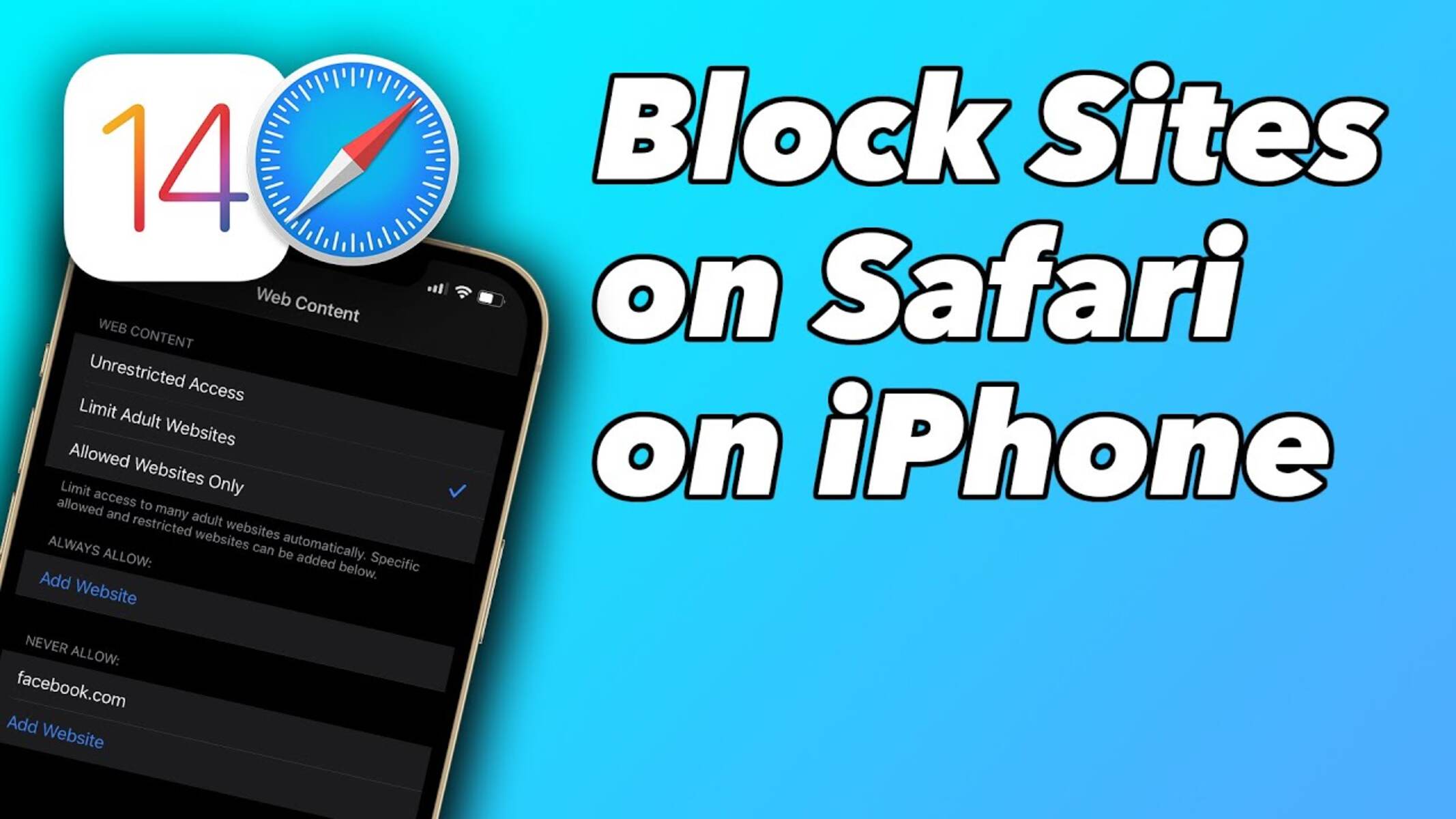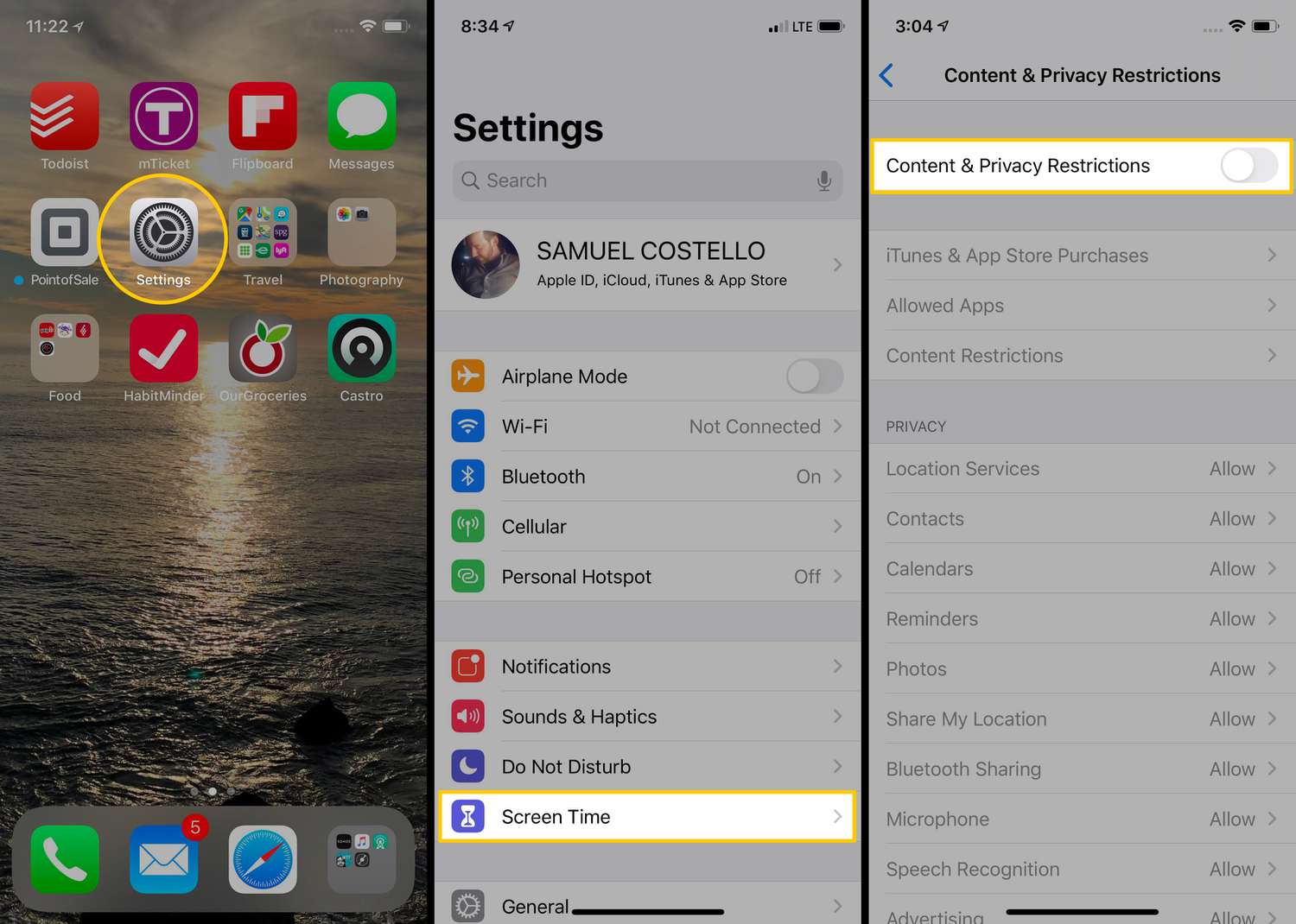Introduction
Safari, the default web browser on iPhone, offers a seamless browsing experience with its user-friendly interface and robust features. However, there are instances when you might want to restrict access to Safari on your iPhone, especially for younger users or to minimize distractions. By implementing restrictions, you can ensure a safer and more focused digital environment.
In this guide, we will walk you through the step-by-step process of restricting Safari on your iPhone. Whether you're a parent seeking to manage your child's device usage or an individual looking to enhance productivity by limiting access to certain apps, this tutorial will equip you with the necessary knowledge to achieve your goal.
With the increasing prevalence of digital devices in our daily lives, it's essential to strike a balance between leveraging the benefits of technology and maintaining a healthy relationship with it. By understanding how to restrict Safari on your iPhone, you can exercise greater control over your digital experience and promote a more mindful approach to browsing.
Now, let's delve into the practical steps to restrict Safari on your iPhone, empowering you to tailor your device's settings according to your specific needs and preferences.
Step 1: Open Settings
To initiate the process of restricting Safari on your iPhone, the first step is to access the device's settings. The Settings app serves as the control center for various configurations and preferences, allowing users to customize their iPhone experience according to their specific requirements.
-
Locate the Settings App: On your iPhone's home screen, look for the Settings app. The icon features a gear wheel and is typically located in a prominent position for easy access.
-
Tap on the Settings Icon: Once you've located the Settings app, tap on the icon to launch the application. This action will open the main settings menu, providing you with a comprehensive array of options to manage your device.
-
Navigate to Screen Time: Within the Settings app, scroll through the available options until you find "Screen Time." This feature enables users to monitor and control their device usage, making it an essential tool for managing digital habits.
By following these simple steps, you can successfully access the Settings app on your iPhone, setting the stage for the subsequent actions required to restrict Safari and tailor your device's functionality to better suit your needs.
Step 2: Tap on Screen Time
Upon tapping on the "Screen Time" option within the Settings app, you will be introduced to a powerful suite of tools designed to provide insights into your device usage and enable you to manage various aspects of your digital experience. The Screen Time feature offers a comprehensive overview of your iPhone activity, including app usage, notifications, and device pickups, empowering you to make informed decisions about your screen time habits.
Upon entering the Screen Time menu, you will encounter a range of functionalities that allow you to understand and regulate your digital interactions. The "Summary" section presents a detailed breakdown of your daily device usage, highlighting the amount of time spent on individual apps and categories. This valuable information serves as a catalyst for self-reflection and enables you to identify areas where you may want to implement restrictions or set usage goals.
Furthermore, the "App Limits" feature within Screen Time enables you to establish specific time constraints for app usage, fostering a balanced and mindful approach to digital engagement. By setting limits on app categories or individual applications, you can proactively manage your time and focus on activities that align with your priorities and values.
In addition to time management tools, Screen Time offers robust parental controls, allowing guardians to oversee and manage their children's device usage. Through the "Family Sharing" feature, parents can set up parental controls for their children's devices, ensuring a safe and nurturing digital environment. This includes the ability to approve app downloads, set content restrictions, and establish downtime periods to promote healthy device habits.
By tapping on the "Screen Time" option and immersing yourself in its multifaceted capabilities, you gain access to a wealth of resources that empower you to take control of your digital well-being. Whether you seek to manage your own screen time, supervise a child's device usage, or create a more focused and intentional digital space, the Screen Time feature equips you with the tools needed to achieve these objectives.
In summary, tapping on "Screen Time" within the Settings app unveils a treasure trove of functionalities designed to enhance your digital experience. From insightful usage summaries to proactive time management tools and robust parental controls, Screen Time serves as a pivotal hub for fostering a healthy and balanced relationship with technology. By leveraging the capabilities of Screen Time, you can embark on a journey towards greater mindfulness, productivity, and well-being in the digital realm.
Step 3: Tap on Content & Privacy Restrictions
After navigating to the Screen Time menu within the Settings app, the next pivotal step in the process of restricting Safari on your iPhone involves tapping on "Content & Privacy Restrictions." This crucial feature empowers users to exert granular control over the content accessible on their devices, ensuring a safe and tailored digital environment.
Upon tapping on "Content & Privacy Restrictions," you are presented with a comprehensive array of options to customize the content and privacy settings on your iPhone. This includes the ability to regulate web content, app permissions, and privacy settings, offering a holistic approach to managing your digital footprint.
The "Content Restrictions" section allows you to set limitations on various types of content, encompassing web browsing, explicit language, and media playback. By delving into the "Web Content" subsection, you can specify the level of restriction for internet access, ranging from unrestricted access to a more stringent approach that limits adult websites and other explicit content. This level of customization enables you to tailor the browsing experience according to your preferences and requirements, ensuring a safe and age-appropriate online environment.
Furthermore, the "Allowed Apps" section within Content & Privacy Restrictions grants you the ability to control which apps are accessible on your device. By fine-tuning the app permissions, you can curate a personalized app ecosystem that aligns with your digital objectives. This feature is particularly valuable for parents seeking to manage their children's app usage, as it enables them to restrict access to specific apps, including Safari, to promote a more focused and secure digital experience.
In addition to content restrictions, the "Privacy" section within Content & Privacy Restrictions empowers users to manage their device's privacy settings with precision. From controlling location services and contacts to regulating access to sensitive data, this functionality ensures that your privacy preferences are upheld, fostering a heightened sense of control and security in the digital realm.
By tapping on "Content & Privacy Restrictions" and immersing yourself in its multifaceted capabilities, you gain the power to shape your digital environment according to your unique needs and values. Whether you seek to establish a safer browsing experience, manage app accessibility, or fortify your privacy settings, this feature serves as a cornerstone for cultivating a personalized and secure digital space.
In summary, tapping on "Content & Privacy Restrictions" within the Screen Time menu unlocks a realm of possibilities for customizing your iPhone's content and privacy settings. From regulating web content and app permissions to safeguarding your privacy, this feature empowers you to wield precise control over your digital experience, fostering a harmonious and secure relationship with your device.
Step 4: Enable Content & Privacy Restrictions
Enabling Content & Privacy Restrictions on your iPhone is a pivotal step in tailoring your device's digital environment to align with your preferences and requirements. By activating this feature, you gain the ability to exert precise control over the content accessible on your device, ensuring a safer and more personalized digital experience.
Upon entering the Content & Privacy Restrictions menu, you are presented with a range of options to customize the content and privacy settings on your iPhone. The initial action involves toggling the switch to enable Content & Privacy Restrictions, marking the commencement of your journey towards a more tailored and secure digital space.
Once enabled, Content & Privacy Restrictions empower you to set limitations on various types of content, including web browsing, explicit language, and media playback. The "Web Content" subsection allows you to specify the level of restriction for internet access, offering a spectrum of options to accommodate diverse preferences. From unrestricted browsing to a more stringent approach that limits access to adult websites and explicit content, this feature enables you to curate a browsing experience that aligns with your values and safeguards against unwanted exposure.
Furthermore, the "Allowed Apps" section within Content & Privacy Restrictions grants you the ability to control which apps are accessible on your device. By delving into this subsection, you can selectively enable or disable access to specific apps, including Safari, thereby shaping a personalized app ecosystem that reflects your digital objectives. This level of control is particularly valuable for parents seeking to manage their children's device usage, as it empowers them to restrict access to certain apps and promote a more focused and secure digital experience.
In addition to content restrictions, Content & Privacy Restrictions encompass robust privacy settings, allowing you to manage your device's privacy preferences with precision. From regulating location services and contacts to controlling access to sensitive data, this feature ensures that your privacy boundaries are upheld, fostering a heightened sense of control and security in the digital realm.
By enabling Content & Privacy Restrictions, you embark on a journey towards crafting a digital environment that resonates with your values and priorities. Whether you seek to establish a safer browsing experience, manage app accessibility, or fortify your privacy settings, this feature serves as a cornerstone for cultivating a personalized and secure digital space.
In summary, enabling Content & Privacy Restrictions on your iPhone empowers you to wield precise control over your device's content and privacy settings, fostering a harmonious and secure relationship with your digital experience.
Step 5: Tap on Allowed Apps
Upon reaching the "Allowed Apps" section within the Content & Privacy Restrictions menu, you are presented with a pivotal opportunity to curate a tailored app ecosystem that aligns with your digital objectives. This feature empowers you to exert precise control over the accessibility of specific apps on your iPhone, including the ability to enable or disable access to Safari, the default web browser.
By tapping on "Allowed Apps," you enter a realm of granular app management, enabling you to shape a personalized digital environment that reflects your unique preferences and requirements. This functionality holds particular significance for individuals seeking to streamline their app usage, parents aiming to supervise their children's device interactions, and anyone desiring a more focused and intentional digital experience.
Within the "Allowed Apps" section, you are presented with a comprehensive list of installed applications on your iPhone, each accompanied by a toggle switch that allows you to enable or disable access to the respective app. By navigating through this interface, you can selectively control the availability of apps based on your specific needs and preferences.
In the context of restricting Safari on your iPhone, the "Allowed Apps" feature assumes paramount importance. By locating Safari within the list of apps and toggling its switch to the "off" position, you effectively restrict access to the Safari browser, thereby shaping a more controlled and focused digital environment. This action is particularly valuable for parents seeking to manage their children's web browsing activities or individuals aiming to minimize distractions and enhance productivity by limiting access to the web browser.
Furthermore, the "Allowed Apps" functionality extends beyond Safari, offering a versatile platform for customizing app accessibility across various categories. Whether you seek to limit access to social media apps, entertainment platforms, or other specific applications, this feature empowers you to tailor your device's app ecosystem according to your unique requirements.
By tapping on "Allowed Apps" and navigating through the list of installed applications, you gain the power to curate a personalized app environment that resonates with your values and priorities. This level of control fosters a more intentional and secure digital space, enabling you to align your device's functionality with your specific digital objectives.
In essence, the "Allowed Apps" feature within the Content & Privacy Restrictions menu serves as a gateway to precise app management, offering users the ability to shape a tailored app ecosystem that reflects their individual preferences and promotes a more focused and intentional digital experience.
Step 6: Toggle Safari to Off
In the final step of restricting Safari on your iPhone, you will navigate to the "Allowed Apps" section within the Content & Privacy Restrictions menu to exert precise control over the accessibility of the Safari web browser. By toggling the switch associated with Safari to the "off" position, you effectively restrict access to the browser, thereby shaping a more controlled and focused digital environment.
Upon locating Safari within the list of apps in the "Allowed Apps" interface, you will encounter a toggle switch adjacent to the browser's name. By tapping on this switch, you can deactivate Safari, symbolizing your deliberate choice to limit access to the web browser. This action holds particular significance for individuals seeking to manage their own browsing habits, parents aiming to supervise their children's web interactions, or anyone desiring a more focused and intentional digital experience.
By toggling Safari to the "off" position, you proactively shape the digital landscape of your iPhone, fostering an environment that aligns with your values and priorities. This deliberate act of restriction empowers you to curate a safer and more controlled browsing experience, mitigating the potential for unwanted exposure to explicit content and promoting a more mindful approach to internet usage.
Furthermore, by disabling Safari, you can minimize distractions and enhance productivity, as the absence of the web browser encourages a more focused engagement with other applications and activities on your device. This deliberate choice to limit access to Safari reflects a proactive stance towards managing your digital experience, enabling you to tailor your device's functionality to better suit your specific needs and preferences.
In essence, toggling Safari to the "off" position within the "Allowed Apps" section represents a pivotal step towards crafting a personalized and secure digital environment. By exercising precise control over app accessibility, you pave the way for a more intentional and mindful interaction with your iPhone, promoting a harmonious and balanced relationship with technology.
This deliberate action empowers you to curate a digital space that resonates with your values, fostering a heightened sense of control and security in the digital realm.
Conclusion
In conclusion, the process of restricting Safari on your iPhone encompasses a series of deliberate and empowering actions that enable you to shape a digital environment aligned with your values and priorities. By navigating through the settings and leveraging the functionalities within the Screen Time and Content & Privacy Restrictions menus, you gain the ability to exert precise control over your device's content, app accessibility, and privacy settings.
The journey begins with accessing the Settings app and delving into the Screen Time feature, where you are introduced to a wealth of tools designed to enhance your digital well-being. From insightful usage summaries to proactive time management features and robust parental controls, Screen Time serves as a pivotal hub for fostering a healthy and balanced relationship with technology.
Upon tapping into the Content & Privacy Restrictions menu, you encounter a realm of customization options that empower you to tailor your device's content and privacy settings with precision. By setting limitations on web content, regulating app permissions, and fortifying privacy boundaries, you create a digital space that reflects your unique requirements and promotes a safer and more intentional browsing experience.
The pivotal step of enabling Content & Privacy Restrictions marks the commencement of your journey towards a more tailored and secure digital environment. By activating this feature, you gain the power to shape your device's content and privacy settings according to your specific needs and values, fostering a harmonious and secure relationship with your digital experience.
Navigating to the "Allowed Apps" section within Content & Privacy Restrictions presents you with a pivotal opportunity to curate a personalized app ecosystem that aligns with your digital objectives. By selectively controlling app accessibility, including the deliberate act of toggling Safari to the "off" position, you proactively shape a digital landscape that resonates with your values and priorities.
In essence, the process of restricting Safari on your iPhone represents a proactive stance towards managing your digital experience. By exercising precise control over app accessibility, you pave the way for a more intentional and mindful interaction with your iPhone, promoting a harmonious and balanced relationship with technology. This deliberate action empowers you to curate a digital space that fosters a heightened sense of control and security in the digital realm.
By embracing the steps outlined in this guide, you embark on a journey towards a more mindful and intentional digital experience, where your device's functionality aligns with your specific needs and values. Whether you seek to manage your own browsing habits, supervise a child's device usage, or enhance productivity by limiting distractions, the process of restricting Safari on your iPhone equips you with the tools needed to achieve these objectives.







